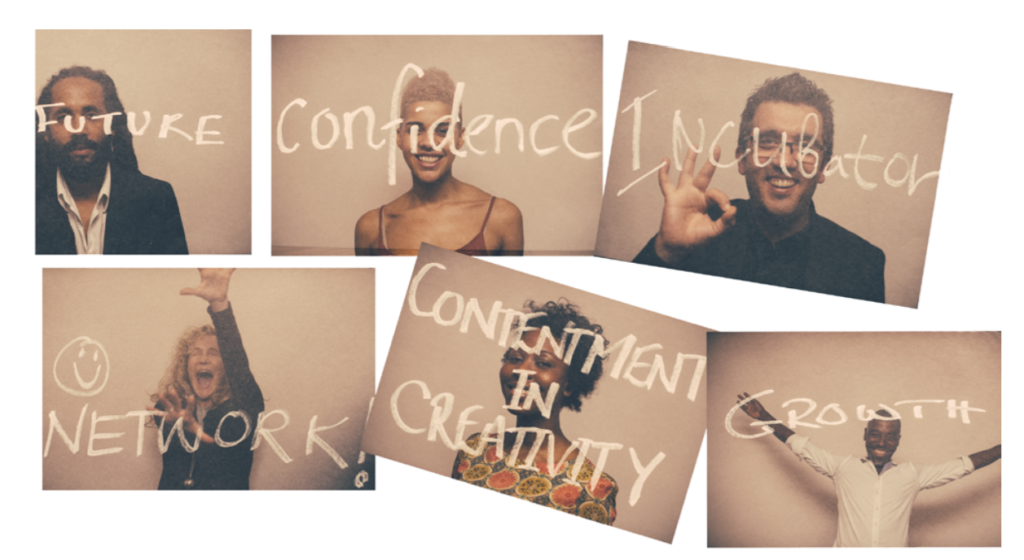Not every business owner in the UK is in the same position today. If you’re a white entrepreneur your access to finance is varied and includes venture capital, equity and debt.
If you’re Black*, you’re much more likely to have to borrow from family or friends and you won’t have anything like the same chance of persuading a funder to inject the big risky capital into your business that could support you to scale.
This is as true of socially purposeful capital as it is for conventional finance. Philanthropy, impact investment and social investment aren’t doing any better, and we shouldn’t pretend that they are. Black communities face persistent and extreme wealth and investment gaps**.
That gap must be bridged, and impact investment should be at the forefront of building that bridge because of its pivotal position. It is the central point between pure social investment – into charities, for little or no financial return, with longer time horizons – and conventional finance, that takes greater risks in pursuit of a quick exit and large profit.
What is impact investment?
Investment in the shares or loan capital of companies and enterprises that not only measure and report their wider impact on society, but also hold themselves accountable for delivering and increasing positive impact.
Impact investment is heralded as the driver not only of future business but future society. It’s an investment revolution with the potential to deliver financial returns to investors, measurable social and environmental benefits, scalable social enterprises, and financial rewards for the most innovative entrepreneurs.
The total value of impact investment in the UK is currently £6.4bn – nearly 800% more than 2011 and set to double by 2025.
Broadly there are 2 types of impact investors: commercial impact investors – private equity and venture capital companies who make up 57% of the market; and charitable impact investors such as Trusts and Foundations who make up the remaining 43%.
How can it address historic inequity?
Impact investing could provide the resources to rebalance the historic legacy of exclusion from investment that Black communities face because it can:
- Mobilise large amounts of capital
- Be comfortable with wealth gains to individual entrepreneurs
- Manage risk and reward in a portfolio rather than through individual projects
- Set social targets that include uplifting excluded groups
Social (charitable) investment can’t do this as it has far less capital, struggles to accept individual wealth gain and has little ability to balance financial risk against reward.
Commercial impact investment seems a better bet, but it needs to be more flexible on timescale. The legacy of intergenerational underinvestment can’t be resolved in three years. So, impact investors need to adapt to longer term thinking on a grander scale than current short-term individual entrepreneurial wins.
Who decides what matters?
The potential for impact investing to deliver racially equitable funding is huge, but there is inherent inertia. To date no funding system in the UK has delivered racially equitable outcomes. For the potential to be realised, inequities in decision-making power must be addressed. Who makes decisions, what they define as important and how those definitions are interpreted must be on the table before we can develop funding systems which are racially equitable.
This is true in the arts, education and even in health where, over several hundred years, the wealthiest charities have invested in the most privileged, in those who are predominantly white. In the case of NGOs like Save the Children or institutions like the World Bank, the beneficiaries of the funds may be more racially diverse but the issues of power and decision making remain the same, albeit played out on a macro scale.
The funders of these global funding institutions are Western governments, the ones who ultimately decide priorities in the global South with majority Black populations.
So key challenges for impact investing must include identifying what matters, what counts as ‘impact’ and who decides.
Commercial impact investors – and indeed social investment and grant-making bodies – have typically taken a narrow view of what constitutes impact. It’s usually about reducing hardship and creating positive change in the lives of individual people***. The more direct that causal link created by the organisation funded to deliver the intervention, the happier funders and capital providers tend to be. Racially equitable funding needs to take a different, and less linear, approach that looks beyond the narrow bookkeeping of too much impact management and embraces the transfer of capital for a range of ends including wealth creation in minoritised communities.
Black communities merely recipients of white largesse?
Inequalities are invariably caused by imbalances in decision making power, and power inequalities tend to be driven by income and wealth disparities.
A contemporary funder seeking long-term change – rather than merely mitigation of the worst excesses of our system – must not only work to alleviate hardship, but also be accountable for their organisational processes that perpetuate power and wealth gaps in that same society.
If impact investment doesn’t change its own structures, in 20 years we will end up with what will simply be an evolution of our current charity system: producing worthy outcomes without changing the position of Black people.
Black communities will remain recipients of white largesse (money), being at best programme ‘delivery agents’ rather than key partners in directing flows of capital.
Social ‘necessity’ of race equity
To unlock the vast resources of the commercial market, we need to move commercial investors from an attitude of indifference – or at best seeing racial equity in terms of reputational risk – to having a deeper concern and maturity about race equity.
This will need to be combined with building a sufficient confidence in the strength of racial equity as a specific market within social investment. In other words, we need to drive up the social ‘necessity’ and long term financial ‘advantages’ of racially equitable investing.
This is where social investors and philanthropists have a key role to play. As more mature partners, with a track record of achieving scale, patiently, for social businesses, they can lead by example.
Here we suggest three key actions to unlock the potential of impact investment:
- With early market development support – such as providing guarantees and taking first loss positions – charitable impact investors could catalyse commercial impact investment. This would allow us to increase the profile of racial equity impact investing and test the demand by individual investors and learn about any barriers to growth. Such a fund would build evidence of reasonable returns that could then influence the industry for wider change, attracting in more money.
- Provide evidence on patience and flexibility. Commercial impact investors must learn to be patient, following the lead of social investors who work to a different model of investing for the long term.
- Develop Black impact investors as well as funding Black investees. Structural change will only be delivered with equity at every level of the impact investment system.
Good intentions are not enough
For impact investment to be the revolution it’s heralded to be, its leaders must mobilise the vast resources at their disposal, over a long-time horizon and at scale.
Just as importantly, the leaders of the impact revolution need to have the courage and self-reflection to closely heed how this is done – through greater inclusion and power sharing. Doing ‘with’ rather than ‘for’ Black communities.
Impact investors have won hearts with a display of social conscience, but these good intentions alone are not enough to deliver racially equitable outcomes. To do this they now need to dare to change the bones of investment itself.
*We have used the term Black. We recognise the diversity of individual identities and lived experiences and understand that Black is an imperfect term that does not fully capture the racial, cultural and ethnic identities of people that experience structural and systematic inequality.
**Only 1.7% of venture capital investments, 2.4% of public grants and 2.6% of impact investment go to Black-led organisations. This would be 14% if investments were distributed in proportion to the Black population. Were this the case, £896m would be mobilised to support the development of Black-led enterprises.
***In general, commercial Impact investors focus on environmental issues e.g. wind and solar farms where decent returns can be generated in the mid to long term; and charitable impact investors on social issues like poverty alleviation and education where financial returns are smaller and less certain, though there is some crossover.




